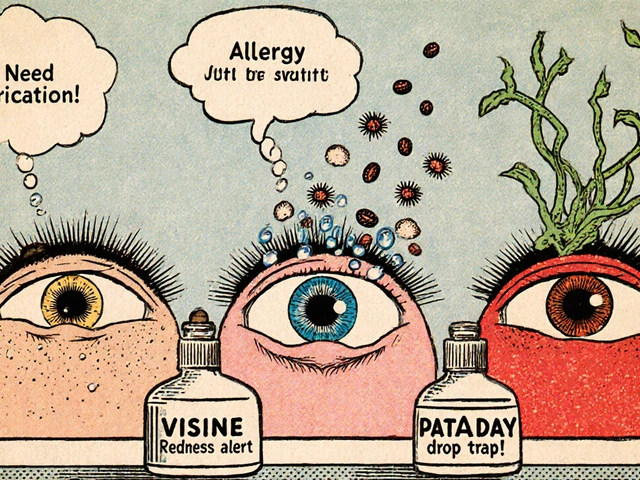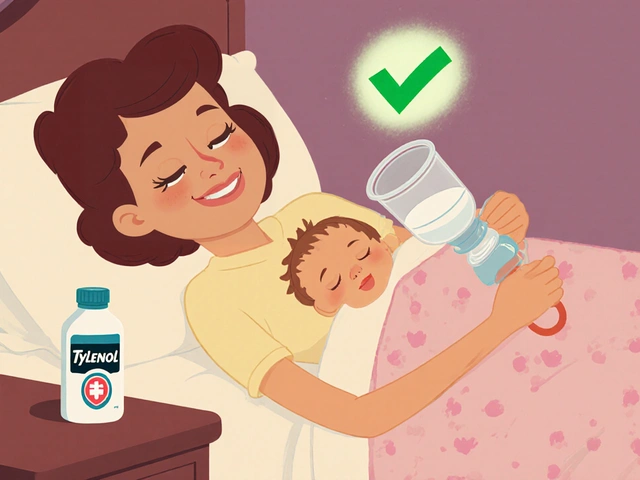You don’t pick an atorvastatin dose the way you pick a T‑shirt size. The right dose depends on your heart risk, your LDL target, and how your body handles statins. If you want a quick, safe way to get this right, use the same playbook cardiology guidelines and FDA labeling use-start with risk, match intensity, then check your response and adjust.
TL;DR and Quick Rules for Picking an Atorvastatin Dose
Here’s the fast answer people usually want. I’ll go deeper below, but these rules get most folks to the right place.
- If you’ve had a heart attack, stroke, stent, or have clinical ASCVD: Start high‑intensity atorvastatin 40-80 mg unless there’s a reason not to (age >75 with frailty, drug interactions, intolerance).
- LDL ≥190 mg/dL (very high): High‑intensity 40-80 mg. This often means familial hypercholesterolemia. Don’t underdose.
- Diabetes age 40-75: Moderate‑intensity 10-20 mg. Go high‑intensity if multiple risk factors or age 50-75.
- No diabetes, primary prevention: Use your 10‑year ASCVD risk. High risk (≥20%): high‑intensity 40-80 mg. Intermediate (7.5-19.9%): moderate 10-20 mg. Borderline (5-7.4%): consider 10-20 mg if you have risk enhancers (family history, smoking, CKD, high Lp(a)).
- Recheck a lipid panel 4-12 weeks after starting or changing the dose. Aim for % reduction: ≥50% for high‑intensity, 30-49% for moderate. Adjust to hit the goal.
- Common starting points: 10-20 mg for moderate; 40-80 mg for high. Tablets come in 10, 20, 40, 80 mg.
- Safety basics: Get baseline ALT. CK only if you have muscle symptoms. Atorvastatin doesn’t need renal dose adjustment. Avoid big grapefruit intakes and certain antibiotics (clarithromycin) while on it.
If you only came for a single line: for most adults without heart disease but with some risk, atorvastatin dosage is 10-20 mg to start; with heart disease or LDL ≥190, it’s 40-80 mg to start.
Sources I’m aligning with: U.S. FDA atorvastatin prescribing information; 2018 ACC/AHA Multisociety Cholesterol Guideline with 2022 focused updates; 2022 USPSTF primary prevention statin recommendations.

Step-by-Step: Choose, Start, and Adjust Your Dose
Think in three moves: assess risk, pick intensity, then verify the LDL drop and tweak. Here’s a simple, safe way to do it.
-
Know your baseline (before you start):
- Recent lipid panel (nonfasting is okay; fasting if triglycerides are high).
- ALT (a liver enzyme) for baseline; you don’t need routine repeats unless there are symptoms.
- ASCVD 10‑year risk score if you’re in primary prevention (age 40-75 without ASCVD). Your clinic can run this in under a minute.
- List of meds and supplements-especially antifungals, macrolide antibiotics, HIV/hep C antivirals, cyclosporine, fibrates.
-
Match your risk to intensity (per ACC/AHA):
- High‑intensity (LDL ↓ ≥50%): Atorvastatin 40-80 mg.
- Moderate‑intensity (LDL ↓ 30-49%): Atorvastatin 10-20 mg.
When to choose each:
- Clinical ASCVD (prior MI, stroke, PAD, revascularization): high‑intensity by default if ≤75. If >75 or frail, moderate may be reasonable.
- LDL ≥190 mg/dL: high‑intensity; consider adding nonstatins if not at target on max tolerated.
- Diabetes (40-75): moderate; go high if multiple risk enhancers or age 50-75.
- Primary prevention without diabetes: high risk ≥20% → high‑intensity; intermediate 7.5-19.9% → moderate; borderline 5-7.4% → consider moderate if risk enhancers; low <5% → lifestyle first.
-
Pick a starting dose grounded in expected LDL response:
Atorvastatin dose Statin intensity Typical LDL-C reduction Common starting use 10 mg Moderate ~35-40% Primary prevention, borderline/intermediate risk, diabetes age 40-75 20 mg Moderate ~40-45% Primary prevention with higher baseline LDL or multiple risk enhancers 40 mg High ~50-55% Clinical ASCVD, LDL ≥190 mg/dL, high 10‑yr risk ≥20% 80 mg High ~55-60%+ Very high risk ASCVD or inadequate response at 40 mg These ranges come from pooled statin trials and the atorvastatin label. Individual results vary-some people see bigger drops, some smaller. That’s why we check a lipid panel after starting.
-
Check and adjust at 4-12 weeks:
- If you hit the % reduction target and you feel fine, stay the course. Then recheck lipids every 3-12 months.
- If you didn’t hit the target, step up: 10 → 20 mg, 20 → 40 mg, or 40 → 80 mg.
- In clinical ASCVD, also watch the absolute LDL number. If LDL stays ≥70 mg/dL on max tolerated statin, evidence supports adding ezetimibe; if still above target in very high risk, PCSK9 inhibitors are next. Your clinician will guide that ladder.
-
Safety and interaction check (do this before and after starting):
- Muscle symptoms: Soreness is usually mild and goes away with a dose change or switch. True severe muscle injury (rhabdomyolysis) is rare. If you get significant pain, weakness, or dark urine, stop and call your clinician. CK testing is only needed if you have symptoms.
- Liver: Statins rarely cause serious liver injury. Baseline ALT is common practice. If you develop fatigue, right‑upper abdominal pain, or jaundice, report it. Avoid starting if you have active liver disease.
- Kidneys: No renal dose adjustment is needed for atorvastatin.
- Drug interactions (CYP3A4): Clarithromycin, itraconazole, and certain HIV/hep C antivirals can spike atorvastatin levels. Cyclosporine is a no‑go. If you must take a strong inhibitor short‑term (like clarithromycin), your prescriber may hold or reduce the statin temporarily. Gemfibrozil increases muscle risk-fenofibrate is preferred if you need a fibrate.
- Grapefruit: Occasional small servings are fine; avoid daily large quantities (like a quart of juice), which can raise levels.
- Pregnancy/Breastfeeding: Most should stop statins when pregnant or nursing. There are rare exceptions for extremely high‑risk cases-this is a specialist call.
When to take it? Atorvastatin has a long half‑life, so any time of day works. Take it the same time daily. With or without food. I take mine after the evening dog walk with my whippet, Lumen-hard to forget when she’s staring at me for her treat.
Missed a dose? Take it when you remember the same day. If it’s close to your next dose, skip and resume on schedule. Don’t double up.
Why intensity matters more than chasing a single LDL number: The big trials and ACC/AHA guidelines anchor decisions to the percent drop in LDL (≥50% for high‑intensity, 30-49% for moderate). That strategy is simple, evidence‑based, and reduces heart attacks and strokes. Absolute LDL thresholds still matter in secondary prevention when deciding on add‑on therapy.

Real-World Scenarios, Checklists, and FAQ
Here’s how this plays out for actual people, plus a tight checklist you can use with your clinician, and answers to the questions I hear most.
Four quick scenarios
-
52‑year‑old woman, no ASCVD, no diabetes, LDL 158 mg/dL, ASCVD 10‑yr risk 9%. Start 10-20 mg (moderate‑intensity). Recheck in 6-8 weeks. If LDL drop is <30%, bump to 20 mg or consider 40 mg if you’re comfortable and no interactions.
-
62‑year‑old man, prior stent (ASCVD), LDL 110 mg/dL on no statin. Start 40-80 mg (high‑intensity). Target ≥50% LDL drop and LDL <70 mg/dL. If not at target on 80 mg and tolerating, add ezetimibe.
-
45‑year‑old with LDL 205 mg/dL, strong family history. High‑intensity 40-80 mg from day one. This pattern screams familial hypercholesterolemia; consider referral and earlier nonstatin add‑ons if needed.
-
70‑year‑old woman with diabetes, LDL 130 mg/dL, well‑controlled BP. Moderate‑intensity 20 mg is reasonable; consider high‑intensity if she has additional risk enhancers (long diabetes duration, CKD, smoking). If muscle symptoms appear, try 10 mg or alternate‑day dosing temporarily and re‑challenge.
Simple decision path you can sanity‑check with your clinician
- Do you have ASCVD or LDL ≥190? → Yes: high‑intensity (40-80 mg). No: go to 2.
- Do you have diabetes and age 40-75? → Yes: moderate (10-20 mg). If multiple risk enhancers or age 50-75, consider high. No: go to 3.
- What’s your 10‑year ASCVD risk? → ≥20%: high; 7.5-19.9%: moderate; 5-7.4%: consider moderate if risk enhancers; <5%: lifestyle first.
- Recheck in 4-12 weeks. If LDL drop misses the target, step up the dose.
What to ask and bring to your appointment
- Your last lipid panel and any past statin history (what you took, what happened).
- All meds and supplements (write them down, include doses). Call out antibiotics, antifungals, antivirals, fibrates, and niacin.
- Any muscle symptoms, liver concerns, or heavy alcohol use.
- Goals: “I want a ≥50% LDL drop” or “I have ASCVD and need LDL <70 mg/dL.”
- A follow‑up plan: when to recheck labs, who to call if symptoms pop up.
Pro tips
- If you’ve had muscle symptoms on one statin, you might still tolerate atorvastatin fine. Switching statins or lowering the dose then re‑challenging often works.
- Alternate‑day dosing can be a bridge for sensitive patients, but aim for daily dosing once symptoms settle-it protects better.
- Don’t start red yeast rice while on a statin. It’s a statin‑like compound with variable potency-and adds risk without oversight.
- If you need clarithromycin or a strong azole antifungal, ask whether to hold or reduce your statin short‑term.
- Atorvastatin tablets aren’t extended‑release; if you need to split for dose flexibility, you can, but try to use available strengths first.
Mini‑FAQ
-
How fast will my LDL drop? You’ll see most of the effect within 2-4 weeks. That’s why the first lab recheck is around 4-12 weeks.
-
Do I need to take this at night? No. Unlike short‑acting statins, atorvastatin works any time of day.
-
What if I get muscle aches? Call your prescriber. Often the fix is dose reduction, a switch to a different statin, or pausing and re‑challenging. Severe pain, weakness, or dark urine needs urgent attention.
-
Do I need routine liver blood tests? Just a baseline ALT. After that, only if you have symptoms.
-
Can I drink alcohol? Light to moderate drinking is usually fine. Heavy drinking increases liver risk-talk it through if that’s on the table.
-
Will it raise my blood sugar? Statins can slightly increase glucose in some people. The heart protection benefit outweighs this for most. If you’re on the cusp of diabetes, keep up lifestyle changes and routine monitoring.
-
Can I stop once my numbers look good? Cholesterol creeps back when you stop. If you’re using it for prevention, plan on long‑term therapy unless your risk changes and you and your clinician decide otherwise.
-
What if I’m over 75? You can still benefit. Many start or continue moderate‑intensity; decisions hinge on overall health, preferences, and tolerance.
-
Breastfeeding or pregnant? Most should pause statins. Discuss timing and alternatives with your OB and cardiology/lipid team.
Troubleshooting different situations
-
LDL barely budged at 10 mg: Confirm you’re taking it daily. Step up to 20 mg. If still short of a 30-49% drop, move to 40 mg.
-
On 40 mg with ASCVD and LDL still ≥70 mg/dL: If you tolerate 80 mg, escalate-then add ezetimibe if needed. Very high‑risk patients who remain above 70 after ezetimibe often qualify for a PCSK9 inhibitor.
-
Muscle symptoms after a few weeks: Pause, check CK if symptoms are significant. When better, restart at a lower dose or try a different statin (e.g., rosuvastatin) and build back up.
-
New prescription for clarithromycin: Ask if you should hold atorvastatin until the antibiotic course is finished. This avoids high drug levels.
-
Triglycerides are also high (>500 mg/dL): Pancreatitis risk changes the plan. You may need fenofibrate or omega‑3s alongside a statin. Gemfibrozil + statin is higher risk for muscles-prefer fenofibrate if a fibrate is needed.
-
Chronic kidney disease: No atorvastatin dose change needed. But muscle risks can rise with combo therapy-stay in touch with your team.
-
Heavy grapefruit habit: Cut down to small, occasional servings or switch citrus. Daily large amounts can raise statin levels.
Why you can trust this dosing framework
It mirrors how major guidelines and the FDA label guide real‑world care. The 2018 ACC/AHA Multisociety Guideline (with 2022 updates) anchors statin choice to risk strata and expected % LDL reduction, and the atorvastatin prescribing information defines dose strengths and safety considerations. The 2022 USPSTF statement supports moderate‑intensity statins for many adults in primary prevention with elevated risk. Those aren’t just committee opinions-they rest on large randomized trials showing fewer heart attacks, strokes, and deaths when the intensity matches the risk.
Your next steps
- Get or confirm a recent lipid panel and ALT.
- Calculate your 10‑year ASCVD risk if you’re in primary prevention.
- Start with 10-20 mg if you’re in the moderate‑intensity lane; 40-80 mg if you’re in the high‑intensity lane.
- Set a reminder to recheck lipids in 4-12 weeks and plan the dose adjustment if needed.
- Keep a simple log of any symptoms and new meds. Bring it to your follow‑up.
One last human note: the “right” dose is the one you’ll actually take that gets you to goal without making you miserable. Sometimes that’s 40 mg right out of the gate. Sometimes it’s 10 mg with a nudge from ezetimibe later. Stay flexible, keep your follow‑ups, and let the numbers-and how you feel-guide the next move.






6 Comments
Bro, this is the most *useful* statin guide I’ve ever seen. 40-80 mg for ASCVD? YES. Why do doctors still start people on 10 mg like it’s a vitamin? 😤 I had a stent at 48 and they gave me 10 mg for 6 months-my LDL barely moved. Finally switched to 80 mg and now I’m at 48. No muscle pain. No drama. Just results. Stop underdosing people. 🚨
YESSSSSS this is the kind of info we need!! 🙌
Finally someone broke it down like a coach instead of a textbook. I’m telling my dad to print this out and take it to his cardiologist. He’s 68, diabetic, LDL 140-was on 10 mg for a year. Now he’s switching to 20 mg. Fingers crossed! 💪
Also, Lumen the whippet is a legend. 🐶❤️
Man, this guide is actually kinda beautiful in how it cuts through the noise. 🌍
Most people think statins are just ‘take one pill and hope’-but this? This is precision medicine with heart. I’m from Mexico City, and honestly, most docs here just give 20 mg to everyone. No risk stratification. No follow-up. I’m gonna share this with my abuela’s doctor-she’s 72, diabetic, no heart issues, LDL 155. She deserves better than a one-size-fits-all approach. Thanks for writing this like a human, not a robot.
While the clinical reasoning presented is methodical and aligned with current guidelines, the casual tone and emotive language may undermine the perceived authority of the content in formal medical settings. A more restrained presentation would enhance its utility for professional consultation.
It is imperative to emphasize that the dosing recommendations outlined herein are predicated upon the assumption of patient adherence, absence of significant drug-drug interactions, and the availability of follow-up lipid paneling. Deviations from this protocol without clinical oversight may result in suboptimal outcomes or increased risk of adverse events. This document should be regarded as an adjunct to, not a substitute for, individualized physician-directed care.
Look, I’ve been managing dyslipidemia in rural India for 12 years-most patients here don’t even have access to a lipid panel, let alone a 10-year ASCVD risk calculator. But this? This framework? It’s the first time I’ve seen a guide that actually works in the real world, not just in academic journals. I’ve been telling my patients: ‘If you had a heart attack, go high. If you’re diabetic and over 50, start moderate. If you’re just borderline with family history, start low and watch your numbers.’ And guess what? Compliance went up 40% because they finally understood *why*. Also, grapefruit juice? We have this thing here called ‘sharbat’-it’s basically sugary citrus syrup. I tell them: ‘One glass on Sunday? Fine. Two liters every day? That’s not a drink, that’s a medical emergency.’ And yeah, I’ve seen people on red yeast rice with statins-don’t. It’s like putting two fire extinguishers on a bonfire and wondering why the house burned down. Also, CK levels? Only if they’re limping like a drunk elephant. Otherwise, skip it. Baseline ALT, then listen to the patient. The body talks. We just forgot how to listen.
Write a comment